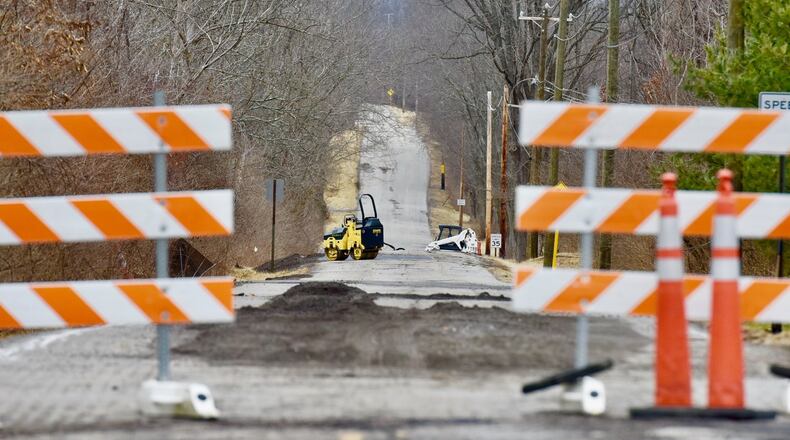RELATED: Tax levy to repair Hamilton roads? Not until these key details are finalized
How bad has it been?
Crews working for Ohio Department of Transportation District 8 have spent 51 percent more time from November through early April this year than the same period last year working to patch roads, said district spokeswoman Elizabeth Lyons.
Credit: DaytonDailyNews
Just last week, she said, temperatures went from the 70s to freezing temperatures, with a “tornado, record rains.”
”Where I have lived here 25 years and never seen water in places, I saw it driving home,” she said.
“So all that water, and then we have a freeze,” she said. “It’s just extending the pothole season out way past the point that we are typically doing this.”
The potholes along the “longitudinal joints” in highways — those areas where one lane of hot pavement is laid down next to a lane that has already cooled off — “are usually worse because that joint is the easiest way for water to seep into the pavement structure,” Lyons said. “Once it gets in there, the freeze-and-thaw action causes expansion of water into ice and pops the pavement out.”
As with any kind of construction, joints usually are the weakest points of a structure, she noted.
“These joints are more or less created from the paving machine placing a typically 12’ lane of hot asphalt (for the surface course) and then coming back for the second lane of hot asphalt, which is now being placed against a cooled off lane,” Lyons said. “Hot against cold.”
Some drivers are peeved. Others, like William Chable of Hamilton, say it’s to be expected, given the weather.
“I get mad at them when I’m tailgating the guy in front and I hit it,” Chable quipped, “but I guess I’m wise enough to know that the radical change in weather is going to make them a reality until May.”
To repair the holes, crews “basically clean the hole out, so there’s no loose gravel or anything in there, and get the patch put in, and tamp that patch down,” Lyons said.
“Usually the asphalt plants don’t open until the weather gets nicer, and we had maybe two days of nice, and I’m not sure if the plants are open,” she said. “So typically during the winter we use cold patch, which is not a longer, permanent fix, but it takes care of the problem until the plants open, when we can get some hot patch.”
About the Author
